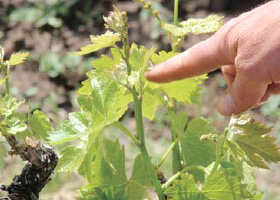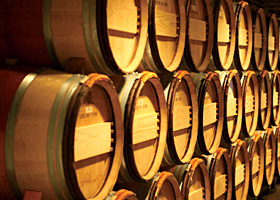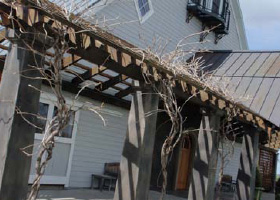National rank:
2nd largest premium wine producer in the United States
Number of wine grape growers:
350+
Appellations:
 Thirteen American Viticultural Areas (AVAs), as recognized and defined by the United States Treasury Department; Alcohol & Tobacco Taxes & Trade Bureau
Thirteen American Viticultural Areas (AVAs), as recognized and defined by the United States Treasury Department; Alcohol & Tobacco Taxes & Trade Bureau
- Yakima Valley - 1983
- Walla Walla Valley - 1984
- Columbia Valley - 1984
- Puget Sound - 1995
- Red Mountain - 2001
- Columbia Gorge - 2004
- Horse Heaven Hills - 2005
- Wahluke Slope - 2006
- Rattlesnake Hills - 2006
- Snipes Mountain - 2009
- Lake Chelan - 2009
- Naches Heights - 2011
- Ancient Lakes of Columbia Valley - 2012
Varieties produced:
30+ varietals
Leading red varietals:
- 1.Cabernet Sauvignon
- 2.Merlot
- 3.Syrah
- 4.Cabernet Franc
- 5.Malbec
- 6.Pinot Noir
- 7.Sangiovese
- 8.Lemberger
Leading white varietals:
- 1.Riesling
- 2.Chardonnay
- 3.Pinot Gris
- 4.Sauvignon Blanc
- 5.Gewurztraminer
- 6.Viognier
- 7.Semillon
- 8.Chenin Blanc
Ratio of white to red:
55% white to 45% red
 Wine production:
Wine production:
12 million cases
Wine grape acreage:
43,000+ acres
Record harvest:
2010 with 160,000 tons
Estimated retail value:
Winery Sales = $437.64 million*
Retail and Restaurant Sales = $135.782 million*
Distributor Sales = $37.34 million*
Full-time equivalent wine-related jobs :
19,000 in Washington, 29,000 nationwide*
Wine-related wages paid :
$579 million in Washington, $850 million nationwide*
Total economic impact on Washington State:
$3 billion*
Total economic impact on U.S. economy:
$4.7 billion*
Wine market segment:
Washington State is focused on the premium wine market segment (wines sold for $8 and higher).
Average hours of summer sunlight:
17.4 hours per day, about 2 hours more than California's prime growing region
Annual rainfall:
Eight inches (20.32 cm) in Eastern Washington (the major grape growing region) 48 inches (121.92 cm) in Western Washington
Wine grape acreage growth:
Acreage data provided by the Washington Association of Wine Grape Growers (WAWGG) unless otherwise noted
- 1993 - 11,100 acres (4,492 hectares)
- 1997 - 17,000 acres (6,880 hectares)
- 1999 - 24,000 acres (9,712 hectares)
- 2002 - 28,000 acres (11,331 hectares)
- 2003 - 29,000 acres (11,736 hectares)
- 2004 - 30,000 acres (12,140 hectares)
- 2005 - 30,000 acres (12,140 hectares)
- 2006 - 31,000 acres (12,545 hectares)*
- 2007 - 31,000 acres (12,545 hectares)
- 2008 - 34,000 acres (13,759 hectares)
- 2009 - 36,000 acres (14,568 hectares)
- 2010 - 40,000 acres (16,187 hectares)
- 2011 - 43,000 acres (17,401 hectares)
 Winery growth
Winery growth
- 1981 - 19 wineries
- 1996 - 80 wineries
- 1997 - 101 wineries
- 1998 - 129 wineries
- 1999 - 160 wineries
- 2000 - 163 wineries
- 2001 - 170 wineries
- 2002 - 208 wineries
- 2003 - 240 wineries
- 2004 - 300 wineries
- 2005 - 360 wineries
- 2006 - 460 wineries
- 2007 - 540 wineries
- 2008 - 580 wineries
- 2009 - 650 wineries
- 2010 - 700 wineries
- 2011 - 740 wineries
Wine production growth
- 1981 - 2.0 million gallons (7.5 m liters)
- 1996 - 5.3 million gallons (19.9 m liters)
- 1997 - 9.6 million gallons (36.3 m liters)
- 1998 - 10.9 million gallons (41.5 m liters)
- 1999 - 10.0 million gallons (38.0 m liters)
- 2000 - 14.0 million gallons (52.7 m liters)
- 2001 - 15.5 million gallons (58.5 m liters)
- 2002 - 17.7 million gallons (67.3 m liters)
- 2003 - 17.3 million gallons (65.5 m liters)
- 2004 - 16.5 million gallons (62.9 m liters)
- 2005 - 19.0 million gallons (72.0 m liters)
- 2006 - 20.0 million gallons (75.8 m liters)
*figures from the 2006 Economic Impact Study by MKF Research, LLC

 Thirteen American Viticultural Areas (AVAs), as recognized and defined by the United States Treasury Department; Alcohol & Tobacco Taxes & Trade Bureau
Thirteen American Viticultural Areas (AVAs), as recognized and defined by the United States Treasury Department; Alcohol & Tobacco Taxes & Trade Bureau Wine production:
Wine production: Winery growth
Winery growth